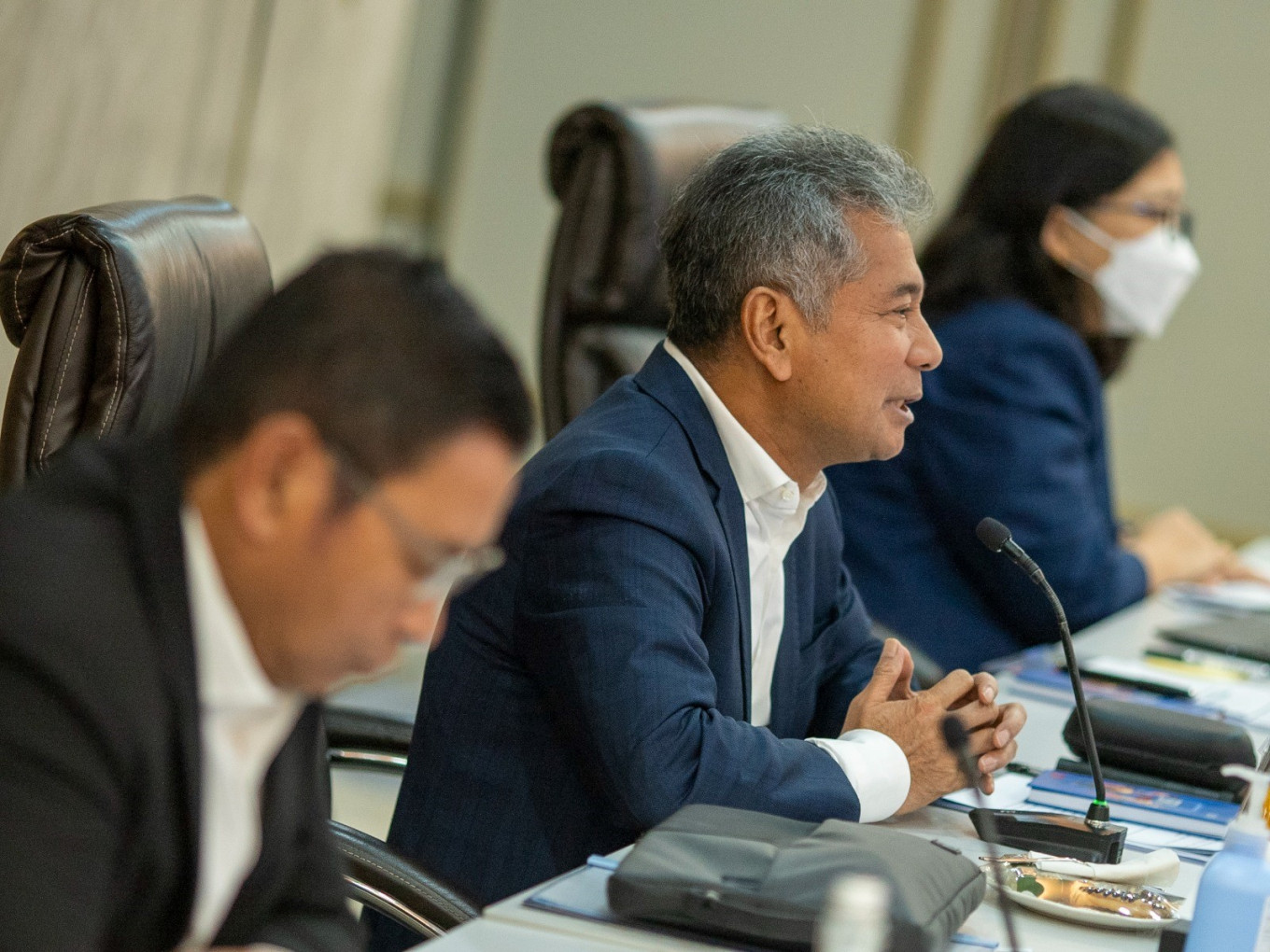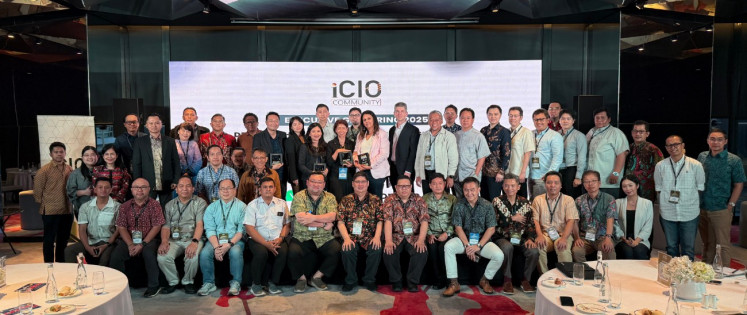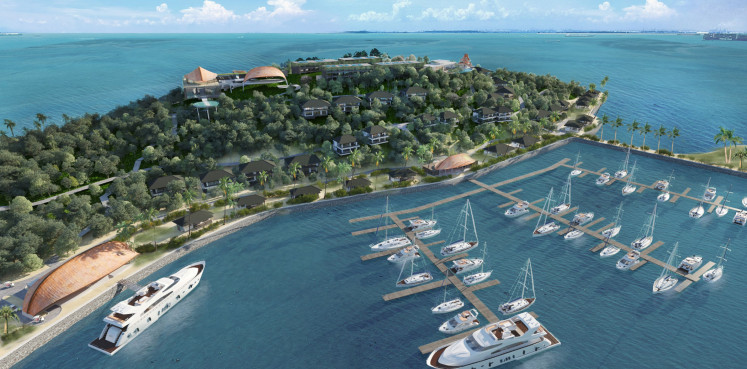Popular Reads
Top Results
Can't find what you're looking for?
View all search resultsPopular Reads
Top Results
Can't find what you're looking for?
View all search resultsBRI records profit of Rp 29.56 trillion, micro-credit growth of 11.41%
PT Bank Rakyat Indonesia (Persero) managed to maintain a positive performance through the end of this year’s second quarter, showing a healthy and sustainable performance as reflected by its assets, which increased 9.21 percent year on year (yoy) to Rp 1,805.15 trillion.
Change text size
Gift Premium Articles
to Anyone
P
T Bank Rakyat Indonesia (Persero) managed to maintain a positive performance through the end of this year’s second quarter, showing a healthy and sustainable performance as reflected by its assets, which increased 9.21 percent year on year (yoy) to Rp 1,805.15 trillion. This allowed BRI to record a consolidated profit of Rp 29.56 trillion, a growth of 18.83 percent yoy.
The results were announced by BRI president director Sunarso at a presentation on Wednesday. He revealed that the main factors supporting BRI's performance included micro and current account and savings account (CASA) loans, which reached double-digit growth, the maintenance of asset quality, improved efficiency ratios, a consistently growing proportion of fee-based income and increasingly solid performances from subsidiaries of BRI Group.
Alignment with micro segment encourages growth of MSME portion
By the end of this year’s second quarter, BRI had disbursed loans and financing worth Rp 1,202.13 trillion with the main support for growth coming from the micro segment, which grew 11.41 percent yoy to Rp 577.94 trillion. The micro credit segment makes up 48.08 percent of BRI's total loan disbursement.
The disbursement of micro-credit grew by double digits, in turn increasing the proportion of BRI's MSME loans. As of the end of the second quarter, 84.48 percent of BRI's total credit, or Rp 1,015.54 trillion, was disbursed to the MSME segment.
"This is the first time BRI's MSME loans have penetrated above Rp 1,000 trillion, and BRI is committed to continuing to increase its MSME loan portion to reach 85 percent in 2024," added Sunarso.
During the same period, Ultra Micro (UMi) Holding integrated more than 36 million loan customers and 162 million micro savings customers, supported by 1,013 SENYUM (Ultra Micro Service Center) co-location offices.
BRI's ability to channel loans is also balanced by maintaining the quality of disbursed loans. The bank’s non-performing loan (NPL) ratio at the end of the second quarter was 2.95 percent, an improvement compared to the NPL ratio in the second quarter of 2022 of 3.26 percent. This in turn decreased BRI's credit cost, from 3.11 percent in the second quarter of 2022 to 2.26 percent in the second quarter of this year.
"BRI's success in managing NPLs was also matched by adequate reserves, where by the end of Q2 2023, BRI's NPL coverage was recorded at 248.54 percent."
Sustainable growth driven by CASA and efficiency
As of Q2 2023, BRI had recorded third party funds (DPK) totaling Rp 1,245.12 trillion. The main support for BRI's TPF growth came from low-cost funds (CASA), which recorded growth of 10.13 percent yoy to Rp 815.42 trillion. BRI's CASA portion continued to increase from 65.12 percent in the second quarter of 2022 to 65.49 percent in the second quarter of 2023.
"BRI has two main strategies to encourage CASA collection going forward, namely focusing on retention and acquisition. For retention, BRI's strategy will focus on digital transactions, optimizing wholesale customer value chains, and using big data to maximize customer opportunities. As for acquisitions, BRI will target the business ecosystem and merchants," explained Sunarso.
From an operational standpoint, the business process reengineering was able to increase efficiency in BRI's business operations. This is reflected in the operating costs to operating income (BOPO) ratio and the cost to income ratio (CIR), which recorded an improvement from the same period the previous year. The BOPO ratio improved from 69.56 percent to 67.71 percent, while the CIR improved from 44.30 percent to 41.79 percent.
"BRI's efficiency ratio, which continues to improve, cannot be separated from the ongoing digital transformation. BRI itself continues to develop the digital area through three focuses, namely Digitizing Core, Digital Ecosystem and New Digital Proposition. The digital transformation carried out by BRI not only has an impact in terms of efficiency, but also the company's fee-based income achievement,” Sunarso said, adding that BRI's consolidated fee-based income had grown by 9.14 percent yoy to Rp 10.22 trillion.
As of the second quarter of 2023, BRI's liquidity and capital were at an adequate level, reflected by the bank's loan to deposit ratio (LDR) of 87.26 percent with a capital adequacy ratio (CAR) of 26.65 percent.
"Supported by adequate liquidity and strong capital, BRI is optimistic that it will be able to stimulate the national economy through financing and empowering MSMEs," he said.
Committed to empowering MSMEs
In line with BRI's success in maintaining sustainable financial performance, the bank continues to implement comprehensive strengthening of the environment, social and governance (ESG) aspects of the company's business and operational activities. As of the second quarter of 2023, BRI's portion of ESG loans was 67.2 percent of the total loan portfolio, or a value of Rp 732.3 trillion.
The social aspect, carried out through MSME empowerment, is the main support for BRI's ESG-based credit growth.
"Not only providing access to financing to the MSME segment, BRI also conducts empowerment programs, including Desa BRIlian, Klasterku Hidupku and Rumah BUMN with the aim of encouraging these MSME actors to upgrade their businesses," said Sunarso.
Through the Desa BRIlian program, BRI was managing 2,449 villages throughout Indonesia as of the second quarter of 2023, providing various training including financial management, digital literacy, entrepreneurship, communication and other areas, with the aim of increasing the capabilities of village officials, region-owned enterprise administrators and MSMEs in the village.
For Klasterku Hidupku, BRI has empowered 17,418 business clusters throughout Indonesia, and these clusters have received at least 1,155 training and literacy programs, as well as 372 instances of productive infrastructure assistance.
In addition, BRI currently operates 54 Rumah BUMN, which house more than 400,000 MSMEs and have conducted more than 10,000 training sessions.
"BRI's implementation of sustainable banking principles is expected to support sustainable business growth and contribute to realizing the company's vision of becoming The Most Valuable Banking Group in Southeast Asia & Champion of Financial Inclusion in 2025," concluded Sunarso.










